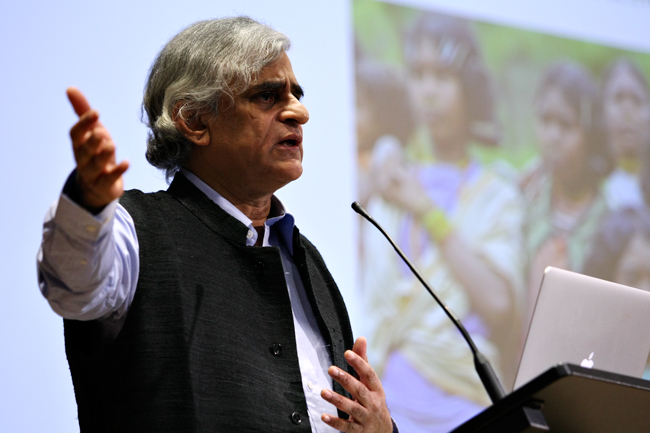Rural farming in India is disappearing because farmers typically earn low incomes and suffer from high suicide rates, according to an award-winning journalist who spoke on campus Thursday.
Worldwide, 70 percent of food comes from small and marginal farmers. In India, the monthly average income of a farmer’s household with five family members is $103, according to journalist Palagummi Sainath.
Sainath said at a lecture Thursday that low income rates are causing a rise in suicide rates among farmers in India — approximately one suicide every 30 minutes — and that the problem is spreading.
“The predicament of the rural farm is not just restricted to India; it’s worldwide,” Sainath said. “Small farms are in a state of collapse.”
Journalism freshman Maleeha Syed said rural India’s disappearance is significant because farming is a big part of the country’s economy.
“Farmers are such a big part of the world’s economy, and so the fact that they feel that such a big part of their labor is going towards other people and feeding other people, yet they can’t even provide for themselves — I think it’s really sad,” Syed said. “It’s even worse because they’re such a crucial part of the Indian economy; it just kind of shows where the priorities lay within the country.”
Sainath said a partial solution to this growing problem is a website he founded called the “People’s Archive of Rural India,” where he tells everyday stories of people living in rural India.
Journalism senior Natalia Fonseca said she loves the idea of creating a people’s archive and hopes to apply it to her home country of Honduras after she graduates.
“The situation of the farmers [in Honduras] is not unlike other world problems,” Fonseca said. “In general, the urgency to do something is very similar to the one I see back in my country. Journalists from anywhere with an iPhone or with a Nikon camera can tell the story of the country, which I think it is very important to empower the people to help themselves.”
The idea of empowering the people through stories about people and told by the people helps erase the feeling of isolation, Sainath said.
“A people’s archive [is an entity] that governments and the powerful cannot take down or make their own,” Sainath said. “This is an archive that does not dispose people of anything and has the potential to better the situation.”





















